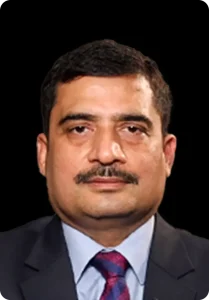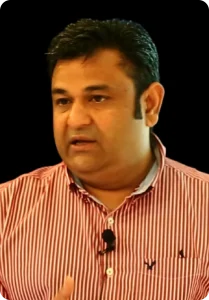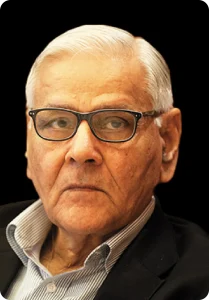In an exclusive interview with MetalGround magazine, GreenLine’s CEO, Anand Mimani outlines ambitious plans to revolutionise logistics industry through innovative and sustainable practices.
Excerpts from an interview:
How does GreenLine plan to transform the future of mobility in India?
As India’s economic engine, the transportation sector faces a critical challenge: slashing dependence on fossil fuels. GreenLine Mobility Solutions Limited emerges as a front-line runner, offering a comprehensive plan to decarbonise heavy-duty trucking, a significant contributor to greenhouse gas emissions.
GreenLine goes beyond a temporary fix. By championing Liquefied Natural Gas (LNG) as a cleaner burning fuel and prioritising sustainability throughout operations, GreenLine positions itself as the key to unlocking a greener future for India’s trucking industry. This shift promises environmental benefits for businesses seeking to align with sustainability goals and improve their Environmental, Social, and Governance (ESG) performance.
Our vision extends beyond just LNG. We will soon be introducing logistics services for electric vehicles (EVs) and might explore hydrogen fuel cell technology in the near future. This multifaceted approach ensures we stay at the forefront of sustainable trucking solutions, offering businesses a future-proof path towards a cleaner tomorrow. As the future of mobility unfolds, we are committed to adapting and integrating new technologies for greater efficiency and reduced emissions.
We further strengthen our plan by:
- Quantifying the Impact: We provide concrete data on emission reduction achieved through LNG adoption.
- Scaling for Success: GreenLine plans to expand its LNG infrastructure, expand the fleet, and install LNG stations through our subsidiary company, Ultra Gas and Energy Limited, to ensure accessibility across India’s commitment to nationwide transformation.
- Safety and Tech-Driven Efficiency: Our drivers are our priority. We ensure their safety comfort with features like AC
- Greenline goes the extra mile to secure cargo delivery: Our trailers utilise air pneumatic attachments for superior load stabilisation. Additionally, we equip the fleet with air suspensions specifically designed for heavy-duty use with Electronic Damping Systems (EDS) to ensure a smooth ride and minimise wear and tear. All Greenline vehicles are outfitted with radial tyres for optimal performance and safety.
- By prioritising sustainability, GreenLine is well-positioned to lead India’s mobility industry into a cleaner and more prosperous future. We are committed to being at the fore-front of this exciting transformation and shaping the future of mobility in India.
What innovative technologies or strategies does GreenLine employ to reduce carbon emissions and improve the environmental sustainability of its operations?
GreenLine is a leader in promoting sustainable transportation using LNG trucks, which offer a cleaner alternative to diesel. These trucks produce 30% lower CO2, 59% lower NOx, 70% lower CO, 100% lower SOx, and 91% lower Particulate Matter. This significantly reduces emissions associated with our transportation services. To date, we have reduced 3,826 tonnes of carbon emissions, equivalent to 1,53,086 trees’ efforts to reduce carbon emissions in the atmosphere.
Can you provide an overview of Green Line’s recent announcement regarding its investment of Rs 4,000 crore to expand its LNG-powered transportation services?
At GreenLine, we’re proud to announce a significant investment of Rs.4,000 crore to empower India’s Fortune 500 companies on their sustainability journeys. This expansion focuses on what you need most: a major increase in our fleet of LNG trucks, specifically designed for heavy-duty, long-haul freight.
We understand the importance of reducing Scope 3 emissions and achieving net zero goals. That’s why our LNG trucks offer a cleaner burning alternative to traditional diesel options. By partnering with GreenLine, you can signifi cantly re-duce your environmental footprint and contribute to a greener future for India’s transportation sector. This investment positions us as your key partner for cleaner, more sustainable transportation solutions.
Considering the Centre’s emphasis on self-reliance and sustainability, how do you envision the role of government policies and initiatives supporting the transition towards green mobility solutions?
The Indian government is creating a supportive environment for policies that accelerate the adoption of eco-friendly transportation solutions. This multi-pronged approach includes A draft LNG policy, outlined in NITI Aayog’s report.
“LNG as Transportation Fuel in Medium & Heavy Commercial Vehicle Segment,” which aims to increase the use of LNG for trucks and other heavy-duty vehicles. India is committed to increasing its energy mix’s share of natural gas to 15%. This vision is supported by the issuance of multiple city gas distribution licenses across the country, expanding the infrastructure for natural gas use.
The government strategically lays the groundwork by establishing the fi rst 50 LNG fuel stations along the Golden Quadrilateral, a key national highway network. This proactive approach addresses the debate of whether infrastructure or demand should come first. While infrastructure development progresses, the government actively engages stake-holders to understand and address the factors influencing the demand for LNG as a transport fuel. Despite the focus on LNG, the government’s commitment to electric vehicles
(EVs) as the primary technology for future mobility remains strong. Proactive initiatives from the Indian industry further reinforce this. This combined strategy positions India to make significant strides towards a cleaner and more sustain-able transportation sector.
How can public-private partnerships (PPP) accelerate the transition to green transportation?
PPP in transportation can benefit the mobility sector amid the climate crisis. Through the power of PPPs, India can play a pivotal role in developing a resilient and sustainable transportation infra-structure. Together, government and industry can create an ecosystem that will underscore our global competitiveness and leadership in green technologies.
Could you provide insights into GreenLine’s approach to integrating LNG and EV vehicles into its fleet and how this contributes to the company’s mission of decarbonising heavy freight transportation?
GreenLine’s focus on LNG and EVs tackles decarbonisation. LNG trucks offer a near-term solution, reducing emissions while lever-aging existing infrastructure. This paves the way for EVs, the ultimate goal for zero-emission freight transportation. By strategically integrating both technologies, GreenLine can make significant progress on its mission of a clean and sustainable trucking future.
What are some of the main challenges GreenLine faces in achieving its vision of reducing CO2 emissions, and how does the company plan to address these challenges?
GreenLine’s green path has some challenges, with the high cost of LNG trucks being a hurdle. While limited LNG stations are challenging, GreenLine is taking a proactive approach. Our subsidiary, Ultra Gas and Energy Limited, is already building more LNG stations. To further smooth the road, GreenLine Is tackling these challenges head-on and building essential infrastructure through Ultra Gas. GreenLine is demonstrating a strong commitment to a cleaner future in long-haul transportation.
Do you believe the Indian logistics industry could be among the top 25 global logistics hubs?
India aspires to become one of the top 25 global logistics hubs, as outlined in its National Logistics Policy. The country is dedicated to enhancing efficiency, fostering business growth, and generating employment opportunities by optimising transportation modes and streamlining processes.
Despite infrastructure limitations and regulatory hurdles, India’s strategic geographic position and rapidly expanding economy present significant potential. By prioritising infrastructure development, lever-aging technology, and implementing progressive policies, India can over-come these obstacles and achieve its goal of joining the ranks of the world’s leading logistics hubs.
India has the potential to be a significant player in carbon reduction for the HCV segment in the next five years.
With the support of new policies by the Indian government on CO2 reduction, this path can be accelerated. To achieve this, the government should consider providing commercial benefits to LNG and EV operators. This could include tax reductions on LNG and EV vehicles and restructuring vehicle taxes to favour cleaner technologies. Additionally, reducing tolls for LNG and EV trucks would further incentivise their adoption.
Source: MetalGround (April – May 2024)















































